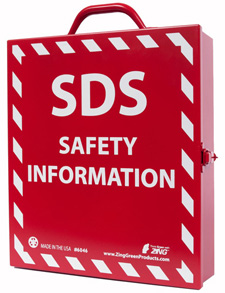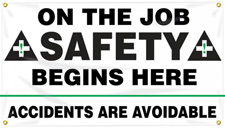| The Home page of ILPI's Safety Data Sheet (SDS) Resource, the leader in SDS information since 1995! | |
| The history and philosophy behind this resource. | |
| A curated collection of books and reference materials concerning Safety Data Sheets and closely related topics. | |
| Paste your plain text SDS into the SDS-Demystifier, and it will be converted into a hypertext-enriched document with links to detailed explanations of each key term. | |
| An extensive list of frequently asked questions about Safety Data Sheets including regulations, content, compliance, and more. | |
| A humorous take on Safety Data Sheet jargon. Fill in the blanks on our entry form to generate a personalized Unsafety Data Sheet to share with your coworkers. | |
| Since 1995, we've maintained this massive curated list of the best places to find Safety Data Sheets on the Internet. | |
| You are here! Way more than a glossary, this hypertext-enhanced resource covers hundreds of SDS-related terms and expert knowledge. Each entry includes both the SDS relevance and links to additional authoritative resources. | |
| Archived results of Safety Data Sheet related polls taken by some of our millions of site visitors | |
| The OSHA regulations behind SDS regulations, including the inspection guidelines and over 400 official interpretations letters under the Hazard Communication Standard | |
| Commercial suppliers of SDS authoring and management software as well as cloud compliance services. | |
| Commercial companies that will create SDS's for your specific needs as well as SDS translation companies. |

Safety signs, banners, and scoreboards? Get yours at Safety Emporium!

Your employees can stay informed and comply with OSHA regulations with SDS information stations and compliance products from Safety Emporium.
Definition
Prior to May 31, 2015, the European Union (EU) required that safety phrases (S-phrases) appear on each label and Safety Data Sheet for hazardous chemicals. S-phrases consisted of the letter S followed by a number. The precise meaning of each of these appears in the table below. These are now obsolete (see Additional Info).
Risk phrases (R-phrases) to denote the risks of the material were also part of the same requirements and are also obsolete.
Additional Info
S-phrases were used to specify special handling requirements of the material whereas the other label elements such as symbols or pictograms (see CHIP) only indicated broad classes of hazards.
While an improvement over simple pictograms, R- and S- phrases were still not specific enough, so they were phased out in favor of the much more comprehensive Hazard Statements and Precautionary Statements under the EU's implementation of the Globally Harmonized System of Classification and Labeling of Chemicals (GHS) per EU Regulation (EC) 1272/2008 (6.6 MB PDF file).
More than one S-phrase could appear on a label or SDS, and they could also appear in combination, such as S1/2 which corrsponds to "Keep locked up" and "keep out of reach of children". In the first table below, single phrases are given, and in the second table, combinations are given. In general, no more than four S-phrases were be sufficient to adequately communicate the safety precautions for a particular material.
| Single Safety Phrases | |
|---|---|
| S1 | Keep locked up. |
| S2 | Keep out of the reach of children. |
| S3 | Keep in a cool place. |
| S4 | Keep away from living quarters. |
| S5 | Keep contents under ... (appropriate liquid to be specified by the manufacturer). |
| S6 | Keep under ... (inert gas to be specified by the manufacturer). |
| S7 | Keep container tightly closed. |
| S8 | Keep container dry. |
| S9 | Keep container in a well-ventilated place. |
| S12 | Do not keep container sealed. |
| S13 | Keep away from food, drink and animal feeding stuffs. |
| S14 | Keep away from ... (incompatible materials to be indicated by the manufacturer). |
| S15 | Keep away from heat. |
| S16 | Keep away from sources of ignition - No smoking. |
| S17 | Keep away from combustible material. |
| S18 | Handle and open container with care. |
| S20 | When using do not eat or drink. |
| S21 | When using do not smoke. |
| S22 | Do not breathe dust . |
| S23 | Do not breathe gas/fumes/vapor/spray (appropriate wording to be specified by the manufacturer). |
| S24 | Avoid contact with skin. |
| S25 | Avoid contact with eyes. |
| S26 | In case of contact with eyes, rinse immediately with plenty of water and seek medical advice. |
| S27 | Take off immediately all contaminated clothing. |
| S28 | After contact with skin, wash immediately with plenty of ... (to be specified by the manufacturer). |
| S29 | Do not empty into drains. |
| S30 | Never add water to this product. |
| S33 | Take precautionary measures against static discharges. |
| S34 | Avoid shock and friction. No longer used. |
| S35 | This material and its container must be disposed of in a safe way. |
| S36 | Wear suitable protective clothing. |
| S37 | Wear suitable gloves. |
| S38 | In case of insufficient ventilation, wear suitable respiratory equipment. |
| S39 | Wear eye/face protection. |
| S40 | To clean the floor and all objects contaminated by this material, use ... (to be specified by the manufacturer). |
| S41 | In case of fire and/or explosion, do not breathe fumes. |
| S42 | During fumigation/spraying, wear suitable respiratory equipment (appropriate wording to be specified by the manufacturer). |
| S43 | In case of fire, use ... (indicate in the space the precise type of fire-fighting equipment. If water increases the risk, add - Never use water). |
| S44 | If you feel unwell, seek medical advice (show the label where possible). No longer used. |
| S45 | In case of accident or if you feel unwell, seek medical advice immediately (show the label where possible). |
| S46 | If swallowed, seek medical advice immediately and show this container or label. |
| S47 | Keep at temperature not exceeding ...°C (to be specified by the manufacturer). |
| S48 | Keep wetted with ... (appropriate material to be specified by the manufacturer). |
| S49 | Keep only in the original container. |
| S50 | Do not mix with ... (to be specified by the manufacturer). |
| S51 | Use only in well-ventilated areas. |
| S52 | Not recommended for interior use on large surface areas. |
| S53 | Avoid exposure - obtain special instructions before use. |
| S54 | Obtain the consent of pollution control authorities before discharging to wastewater treatment plants. No longer used. |
| S55 | Treat using the best available techniques before discharge into drains or the aquatic environment. No longer used. |
| S56 | Dispose of this material and its container at hazardous or special waste collection point. |
| S57 | Use appropriate container to avoid environmental contamination. |
| S58 | To be disposed of as hazardous waste. No longer used. |
| S59 | Refer to manufacturer/supplier for information on recovery/recycling. |
| S60 | This material and its container must be disposed of as hazardous waste. |
| S61 | Avoid release to the environment. Refer to special instructions/Safety data sheets. |
| S62 | If swallowed do not induce vomiting: seek medical advice immediately and show this container or label. |
| Multiple Safety Phrases | |
|---|---|
| S1/2 | Keep locked up and out of reach of children. |
| S3/7 | Keep container tightly closed in a cool place. |
| S3/9 | Keep in a cool, well-ventilated place. No longer used. |
| S3/7/9 | Keep container tightly closed in a cool, well-ventilated place. No longer used. |
| S3/9/14 | Keep in a cool, well-ventilated place away from ... (incompatible materials to be indicated by the manufacturer). |
| S3/9/49 | Keep only in the original container in a cool, well-ventilated place. |
| S3/9/14/49 | Keep only in the original container in a cool, well-ventilated place away from ... (incompatible materials to be indicated by the manufacturer). |
| S3/14 | Keep in a cool place away from ... (incompatible materials to be indicated by the manufacturer). |
| S7/8 | Keep container tightly closed and dry. |
| S7/9 | Keep container tightly closed and in a well-ventilated place. |
| S20/21 | When using do not eat, drink or smoke. |
| S24/25 | Avoid contact with skin and eyes. |
| S36/37 | Wear suitable protective clothing and gloves. |
| S36/39 | Wear suitable protective clothing and eye/face protection. |
| S37/39 | Wear suitable gloves and eye/face protection. |
| S36/37/39 | Wear suitable protective clothing, gloves and eye/face protection. |
| S47/49 | Keep only in the original container at temperature not exceeding ...°C (to be specified by the manufacturer). |
| S3/7 | Keep container tightly closed in a cool place. |
| S7/47 | Keep container tightly closed and at a temperature not exceeding ...°C (to be specified by the manufacturer). |
| S29/56 | Do not empty into drains, dispose of this material and its container at hazardous or special waste collection point. |
SDS Relevance

Encourage workplace safety culture with safety banners from Safety Emporium.
Safety phrases were never required on labels or Safety Data Sheet by U.S. OSHA, however, they were required in the European Community. As safety phrases were formally phased out in 2015, they are generally only seen on older (and obsolete) SDS's. If your current sheet has R- and S-phrases instead of H-statements you should contact the manufacturer to get an updated sheet.
Remember that safety phrases only indicated the safety precautions that you need to follow. For information about the risks see the risk phrases entry.
Further Reading
- The Basics of Chemical Safety at the International Occupational Safety and Health Information Centre (CIS) discusses R- and S-phrases, and includes a list of chemicals.
- A R- and S-phrases language conversion tool in 23 languages at SchoolScout24.
- Council Directive 2006/102/EC (PDF file) contains R- and S-phrases as well as other hazard terms in 23 languages; no longer in force, of course.
- The Provisions for Classifying Dangerous Preparations (see Schedule 3) discusses how risks and risk phrases are quantified.
See also: ANSI, CHIP, Precautionary Statements, risk phrases and the International Section of the MSDS FAQ.
Additional definitions from Google and OneLook.